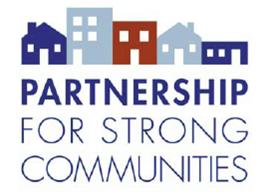Nonprofit Organizations Help Boost Voter Numbers, Study Finds
/If one concurs with the adage that all politics is local, it should come as no surprise that the dust has barely settled on the state and national elections of 2012 as the focus shifts to the municipal–level elections of 2013.
A Massachusetts-based organization devoted to increasing the role of nonprofit organizations in spurring voter interest and participation is already publicizing its “Voter Participation Starter Kit for Nonprofit s and Social Service Agencies,” available for web download, coming off what it describes as the success of 2012.
s and Social Service Agencies,” available for web download, coming off what it describes as the success of 2012.
The benchmark National Election Exit Poll showed that the lower income, younger, and diverse populations typically served by nonprofits accounted for a greater share of voter turnout than ever before. While some of this can be attributed to population increases, it was also aided by unprecedented voter education and engagement efforts from the nonprofit and civic sector, according to the organization reported.
“Nonprofits are among the nation’s most trusted messengers. An annual Harris poll consistently ranks nonprofits among the few sectors (small businesses are another) that respondents would like to have more rather than less influence in government.” That observation published in The Nonprofit Quarterly, from George Pillsbury, MPA, founder and executive director of Nonprofit VOTE, underscores the organization’s initiative.
He adds: “Nonprofits of the 501(c)(3) variety are presumed to have a limited capacity for promoting political participation because laws prohibit them from engaging in partisan politics to support or oppose a candidate for public office. Yet nonprofits’ inherent civic engagement assets make them a potent force for political and electoral engagement, further strengthened by their nonpartisan approach.”
Organizations including the Connecticut Association of Nonprofits — a long-time partner of Nonprofit VOTE — have led this transition in recent years by bringing voter engagement into the sector mainstream. According to the organization’s newsletter, for the 2012 election they pointed a spotlight on the sector by sending educational materials on the needs of nonprofits to all state candidates.
“Elected officials pay attention to which communities and which populations turn out and are generally more responsive to organizations involved in registering voters and encouraging turnout,” emphasized Sophie Lehman, Communications Director for Nonprofit VOTE.
The National Election Exit Poll is the most relied on exit poll conducted by Edison Research on behalf of ABC News, Associated Press, CBS News, CNN, Fox News, and NBC News.

































